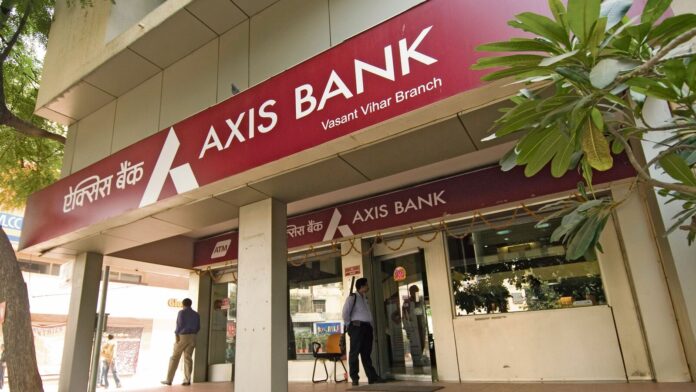One-time standard asset provisions due to the declassification were ₹1,231 crore, bringing the total standard asset provisions for the quarter to ₹1,568 crore—up from ₹154 crore in the previous quarter and ₹140 crore in the corresponding quarter of last year.
However, a sequential decline in loan loss provisions resulted in overall provisions and contingencies of ₹3,547 crore, compared to ₹3,948 crore in the first quarter of the financial year.
The reclassification also had an impact on the bank’s operating expenditure, as it had to purchase priority sector lending certificates (PSLCs) to offset the shortfall in PSL, management stated.
Operating expenses for the bank rose 5% on year and 7% on quarter to ₹9,957 crore for the reporting quarter, weighing on the bottomline, amid muted 2% YoY and 1% QoQ growth in net interest income (NII) to ₹13,745 crore.
Net interest margin (NIM) for the bank fell to 3.82% in Q2 FY26 from 3.91% a quarter ago and 4.06% a year ago, largely on account of the successive rate cuts by the central bank since February.
In the post-earnings call, chief financial officer Puneet Sharma said that barring the impact of the PSLCs, the operating expenses were higher by 2% on year and that costs for the bank remain “well contained”.
The private sector bank was the first among major banks to declare its Q2 results.
The bank’s gross NPA ratio improved to 1.46% as of 30 September, from 1.57% a quarter ago, but was slightly worse than the 1.44% in the year-ago period. The net NPA ratio at 0.44% was marginally better than the 0.45% reported a quarter ago, but significantly higher than the 0.34% recorded in the previous year.
Reclassification of some farm loans
Sharma stated that the RBI advisory on declassification was a consequence of the annual regulatory inspection, which pertained to two farm loan products extended in 2015 and 2021, classified as priority sector loans. The existing stock of discontinued loans will be converted to agricultural or consumption use based on their intended end-use and will be closed upon review or at the time of renewal on 31 March 2028, whichever is earlier. The additional provisions made against these loans will then be written back.
“The bank has been asked to maintain the standard asset provision on this stock of loans without changing customer terms till they get fully recovered or repaid,” Sharma said, adding that the additional provisions of ₹1,231 crore owing to this declassification amount to 5% of the underlying loan portfolio. The loans are secured, and the bank does not expect a “significant increase” in credit costs due to the discontinued products.
Managing director and chief executive officer Amitabh Chaudhry said that the bank will continue to monitor its portfolios, as advised by RBI, but does not expect a deterioration in the quality of these loans.
“This latest kind of advisory has come about because one of the constituents has been fighting in the courts, and based on certain court direction, RBI has had to relook at the whole process all over again,” Chaudhry said, adding that regulatory compliance is “front and centre” for the bank and is working hard to ensure that it does not happen again and assure investors that it is a one-off impact.
Retail loan quality
Outside of the one-time impact, retail asset quality is stabilising for the bank, including the technical impact of the change in non-performing assets (NPAs) classification last quarter. In Q1 FY26, Axis Bank tightened its metrics for recognising certain loan categories as non-performing assets. These included one-time settled accounts across product segments, as well as cash credit and overdraft products, which are typically offered to retail customers, especially retail agricultural customers.
“The portfolio is stabilised and we are getting some growth back in the two product variants,” Sharma said. Net slippages for the bank from these portfolios decreased to ₹280 crore in Q2 FY26, from ₹1,861 crore in the previous quarter. Accordingly, provisions too normalised to ₹256 crore from ₹821 crore in Q1 FY26.
Recoveries and upgrades from this portfolio totalled around ₹1,200 crore, bringing the overall recoveries and upgrades for the quarter to ₹2,887 crore—higher than the ₹2,147 crore recorded in the previous quarter and the ₹2,069 crore in the year-ago period.
“The pool has a self-correct ratio of 35%. As this pool moves forward, you should see the value of gross slippage on technical impact continue to tend downwards. And if recovery and upgrade performance hold, the net slippages should perform better,” Sharma said.
As a whole, customer repayment behaviour is improving, executive director Subrat Mohanty said, adding that the two problem areas for the bank were unsecured loans and credit cards. While the card portfolio has seen a “stabilising trend” from Q4 FY25 onwards, unsecured loan quality is starting to stabilise, making the bank confident of growing disbursements in these segments. As such, even now, the bulk of the retail NPAs continue to be from these credit cards and personal loans, he added.
Axis Bank,standard assets,provisions,Reserve Bank of India,net interest income,provisions on standard assets,priority sector loans,gross NPA ratio,loan loss provisions,Q2 results,financials,asset quality,credit quality,NPA recognition,one time reclassification,standard asset provisions,provisioning impact,operating expenses,net profit
#Axis #Banks #standard #asset #provisions #onetime #reclassification #impact #PAT #falls #YoY

